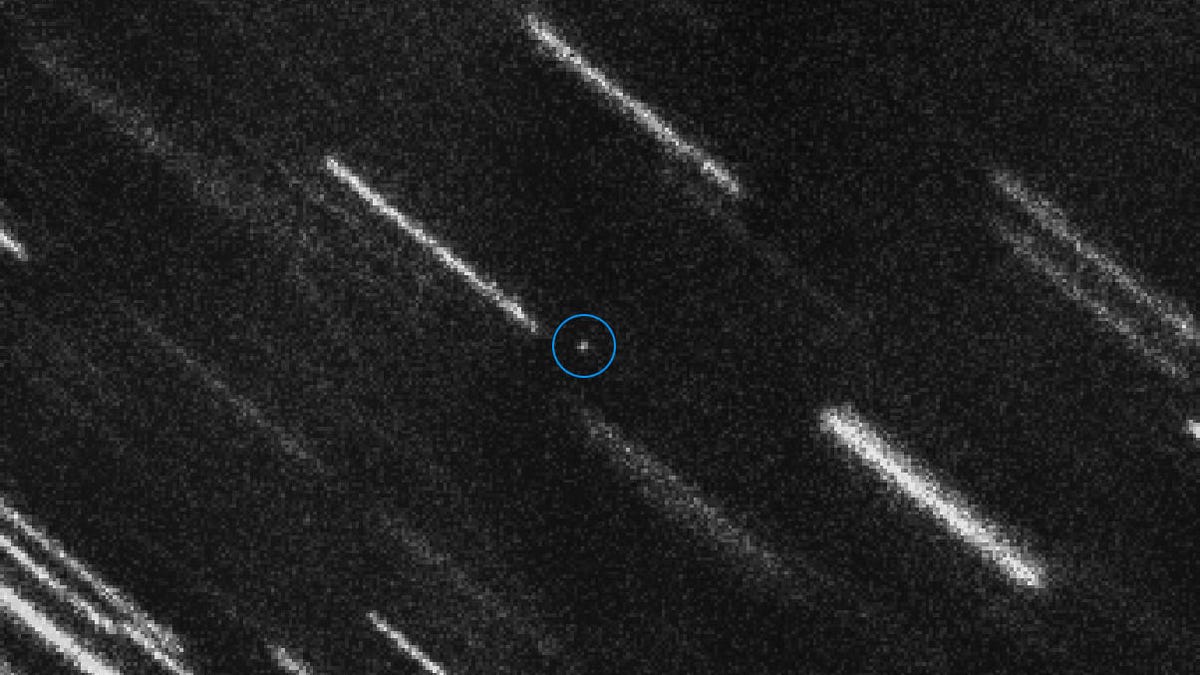Asteroid zips by ahead of bigger one coming even closer
A newly discovered asteroid makes a pass at Earth. Meanwhile, a closely monitored space rock will race by next week, and it won't be the last time it pays a visit.

Asteroid 2012 TC4 is circled in blue in this ESO image.
A bus-sized asteroid that was first discovered on September 24 ripped by Earth on Monday morning, coming as close as 54,100 miles (87,065 kilometers).
While 2017 SX17 sailed safely by us, the fly-by serves as a preview for an even bigger space rock set to pass even closer on the evening of October 11.
Asteroid 2012 TC4 is the size of a house and as early as July it was conceivable that it could come as close as 4,200 miles (6,800 kilometers). However, astronomers from around the world have been observing the asteroid for the past several weeks and treating it as an exercise to test the tracking and communications capability of the international network that monitors potentially hazardous asteroids. That network's latest predictions (PDF) have TC4 passing closest to Earth at 10:42 p.m. PT on October 11 at a distance of 27,211 miles (43,793 kilometers) from the planet's surface.
There's further good news for those of you who have had some anxiety from all the recent talk of imagined planetary collisions causing the end of the world. As recently as Monday night there was a one in 250 probability that TC4 could impact Earth during its 2050 fly-by, but the latest observations now rule that out, according to NASA data and other astronomers.
News from #2012TC4 telecon on Friday: Remaining 1in 250 chance of impact in 2050 ruled out with data from @LCO_Global +many other telescopes
— Tim Lister (@astrosnapper) October 2, 2017
The path of asteroid 2012 TC4 is hard to guarantee though, as its orbit is likely to be perturbed significantly by next week's close pass by us. That said, astronomers are trying to predict how its orbit will change and the path it will take for future visits. At this point, we appear to be safe for at least three decades. But an impact at some point after 2050 currently cannot be ruled out.
Astronomers will continue to keep an eye on 2012 TC4, and certain corners of the internet will surely keep watch for Nibiru or planet X or whatever. But while we wait to see what this one asteroid's future holds, keep in mind that it's believed we have only discovered about 1 percent of the asteroids in our solar system that could level a city if they impacted Earth.
The lesson of all these asteroid close call stories? We can always use more eyes and telescopes pointed at space.
Crowd Control: A crowdsourced science fiction novel written by CNET readers.
Solving for XX: The tech industry seeks to overcome outdated ideas about "women in tech."

